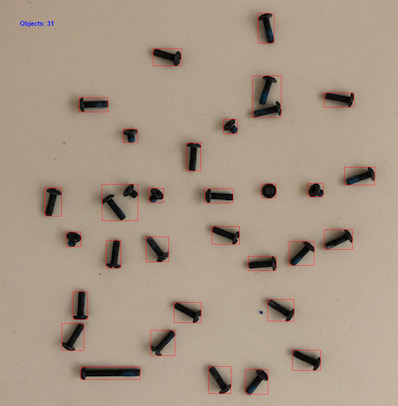TIECanvas.DrawRects
Declaration
procedure DrawRects(Rects: TList; LineColor: TColor = clNone; LineWidth: Integer = -1; Ellipses: Boolean = False; BrushStyle: TBrushStyle = bsClear); overload;procedure DrawRects(Rects: TIERectArray; LineColor: TColor = clNone; LineWidth: Integer = -1; Ellipses: Boolean = False; BrushStyle: TBrushStyle = bsClear); overload;
procedure DrawRects(Rects: TIEVisionVectorRect; LineColor: TColor = clNone; LineWidth: Integer = -1; Ellipses: Boolean = False; BrushStyle: TBrushStyle = bsClear); overload;
procedure DrawRects(KeyPoints: TIEVisionVectorKeyPoint; LineColor: TColor = clNone; LineWidth: Integer = -1; Ellipses: Boolean = False; BrushStyle: TBrushStyle = bsClear); overload;
Description
Draw a list of rects to the canvas as boxes or ellipses.Rects can be one of:
◼A TList of TRects, e.g. from SeparateObjects
◼An array of TRects, e.g. from FindObjects
◼A TIEVisionVectorRect object, e.g. from IEVision methods such as createVectorRect, getRegions, detectObjects, etc.
◼A TIEVisionVectorKeyPoint object, e.g. from IEVision methods such as detect
You can optionally specify a line color and width (if you have not already specified these using Pen).
Example
objRects := ImageEnView1.Proc.SeparateObjects( 4, True, 10 );ImageEnView1.IEBitmap.IECanvas.DrawRects( RectsList, clRed, 2 );
ImageEnView1.Update();
for i := 0 to objRects.Count - 1 do
dispose( PRect( objRects[i] ));
objRects.free();
